#Historical Places In India & World
Text

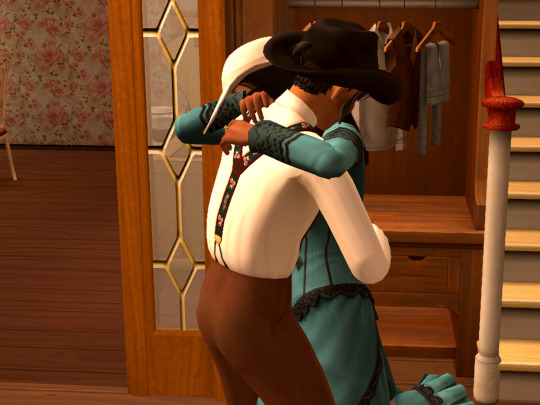
They find each other in the foyer, he no doubt coming up to meet her as he often did.
An apple, some fresh eggs. Once he had a chick in his shirt pocket. He would always bring her these little gifts.
She supposed, now, she was bringing him one. At least, she hoped that was how he saw it.
"Morning, Ms. Rao. I was just comin' up to meet you."
"Yes. I thought I would meet you instead." She replied, something nervous making her usually confident smile twitch in the corners.
"Is something wrong? You look like you need to lie down, Latika." Her name was said so sweetly, only shared when they were alone.
"I-" And the words don't come out, all her childish fears, those which she thought she mastered coming up to choke her. "I am pregnant, Lloyd."
Was it shameful that even now, even after all they had shared the fear that he would regret her, leave her alone with not only the child, but, even more frightening, the possibility there wouldn't be one at all. And that this one, this one might take her with it?
But Lloyd Hollowbreast was dropping to one knee, digging for something in his pocket. Her heart hung in her throat.
"I was meaning to give this to you one of these mornings." He laughs a little, nerves showing.
'What a pair we make,' She thought, surprised by the fact she was still even able to think, to process what was happening.
He digs out a ring, obviously made by hand and the sweeter for it.
"My family doesn't usually give rings, but I thought I should do this proper for you; the way you like."
The tears began welling in the corners of her eyes, she didn't even have the heart to tell him she wasn't used to the custom herself.
He shifts his weight, looking up at her, running his tongue over his bottom lip before he asks:
"So Latika, will you marry me?"
She manages a smile, wobbly as it is.
"I will Lloyd."
#cw: miscarriage#cw: pregnancy#cw: death#ts2#sims 2#historical sims#anyway i dont think engagement rings were a thing pre-colonial india but again this doesnt take place in the real world so!#neighborhood: alicel#sim: lloyd hollowbreast#sim: latika rao#alicel- y1w1#homestead challenge#ts2 homestead challenge
4 notes
·
View notes
Text
National Monument of USA The Statue of Liberty

The Statue of Liberty standing proudly in New York Harbor, is a powerful symbol of freedom and hope. Its majestic presence and rich history have made it an iconic landmark known and admired worldwide Read More
#statue of liberty#tourism#places#travel#india#usa travel#best destinations#world tour#historical#landmark
2 notes
·
View notes
Text

India is a country with a lot of different cultures, a long and interesting history, and beautiful natural scenery. It has many places that tourists from all over the world find interesting. Whether it’s amazing buildings or places of worship, India’s tourist spots provide a wide range of experiences. Here, Bright Holidays presents a curated list of seven UNESCO World Heritage sites that encapsulate India’s unique charm.
Bright Holidays provides domestic tour packages that can take you to every one of these UNESCO World Heritage sites.
#india#unesco world heritage#historical sites#tourist places#travel agency in india#travel and tourism#travel agency
1 note
·
View note
Text
A look at Pakistan's historical heritage and world UNESCO side Mohenjo Daro
A look at #Pakistan's #historical heritage and #world #UNESCO side Mohenjo Daro
A thread ⬇️
Standing on the highest brick platform in Mohenjo-daro’s fort district, just a few steps from a second-century Buddhist stupa, it’s impossible not to feel awe at the sheer scale and complexity of the prehistoric city around you. It takes a moment to grasp the fact that what you’re seeing is more than 4,500 years old, one of the oldest—if not the oldest—known settlements in the entire history of…

View On WordPress
#Archaeological Survey of India#archaeologist#Historical places#Indus Valley Civilization#Mohenjo Daro#National Museum#Pakistan UNESCO Site#Priest King#Sindh#UNESCO#UNESCO Site#World UNESCO Site
1 note
·
View note
Text
youtube
#youtube#social media#travel#vacation#nature#landscape#wonderful places#tourisim#world tour#tourist#touringadventure#amazing places#heritage#keralis#india#indian#historical#history#histoire#ancient#kinnporsche la forte#tamilnadu#tamilnet#solo travel#traveler#traveller#travelling#beautiful places#places#adventure
0 notes
Text
জাতীয় স্মৃতিসৌধ, সাভার | Jatiyo Smriti Soudho | Family Tour 2022
জাতীয় স্মৃতিসৌধ, সাভার | Jatiyo Smriti Soudho | Family Tour 2022
জাতীয় স্মৃতিসৌধ, সাভার | Jatiyo Smriti Soudho | Family Tour 2022 National monument of Bangladesh
জাতীয় স্মৃতিসৌধ, সাভার | Jatiyo Smriti Soudho | Family Tour 2022
হ্যালো ভিউয়ারস ওয়েলকাম টু মাই ইউটুউব চ্যালেন রান উইথ নাদমান এ। আজকে আমরা চলে এসেছি মুক্তিযুদ্ধের গৌরব গাথা ইতিহাস নির্ভর জাতিয় স্মৃতিসৌধে। যেটি সাভারের নবীনগর এলাকায় অবস্থিত। পরিবার নিয়ে সবুজ পরিবেশে সুন্দর সময় কাটাতে পারেন…

View On WordPress
#জাতীয় স্মৃতি সৌধ#জাতীয় স্মৃতি সৌধর ইতিহাস#জাতীয় স্মৃতিসৌধ#রান উইথ নাদমান#bangladesh#bangladesh (country)#bangladesh 1971#dhaka#historical places#historical places in the world#historical places in the world list#how to draw national memorial of bangladesh#jatiyo smriti soudho#just travels#national martyrs memorial at savar bangladesh#national martyrs memorial india#national memorial of bangladesh paragraph#national monument bangladesh#run with nadman#savar#savar national martyrs memorial
0 notes
Text



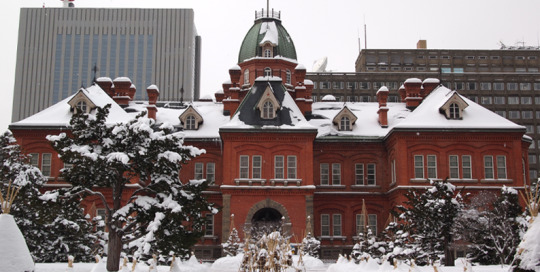

So, with the new legends there's a neat way we can take a guess at some of the time frame. Although it's largely aesthetic and hard to gauge the intended historical parallels of, the not-Eiffel Tower at the center of the city could presumably have been completed in the late 1880s like the real thing. Interestingly that places it pretty concurrent to the construction of the Hokkaido Government building in the 1870s that served as the basis of the Galaxy Team HQ in the first Legends game.
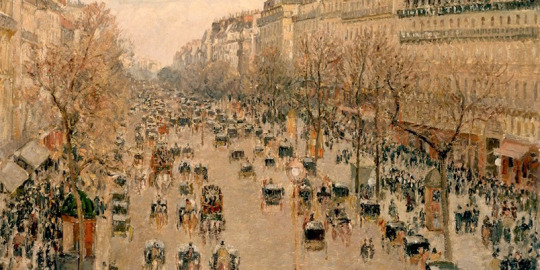
But with the keywords being "urban redevelopment" the setting could only possibly be Haussman's renovation of Paris that took place from the 1850s-1920s. So given that the tower is already standing, that places Legends Z-A between 1889 and 1927.
And I doubt it would play into the setting of a Pokemon game but I think it's neat that it would mean taking place firmly in the 3rd French Republic, as that's not typically the most romanticized period of French history. (Kind of shocking given just how much Japanese pop culture loves to fixate on the Ancien Regime and Rococco architecture.) It's right at the height of the French Colonial empire and their rivalry with the British... Even if they don't address the history directly, certainly not the darker bits, I wonder if we'll see an ancestor of Rose* and some mention of Kalos and Galar's relation as a hint at the Pokemon world's equivalent of India. (Elephant, what elephant...)
*put a pin in that... Well come back to Rose later...


Also I know a lot of the stupid "leaks" that were just running with any/every rumor they could find had been talking about Celebi, despite there being no signs of it in the direct, but it's possible that the Z-A title and the fadethru of the sort of sci-fi looking city diagram into a pencil and parchment one is indicating going back in time --backwards, from Z to A, end to start.
and just so long as I'm just picking at edges of things...


The unknown are an anagram of, "POKEMON PRESENTS"(oh and the SOEYUE one at the end is just "SEE YOU") and the ""confidential"" stamp on the documents likely reads "Gokuhi" as in gokuhi[極秘]: "Top Secret," but the rest of the text doesn't seem to match either Japanese, French, or English,




Hito to POKEMON no kyouzon o yumemite[人と ポケモンの共存を夢見て]: "Dreaming of people and Pokemon's coexistence"
Toshisaikaibatsu hassou MIARE CITY[都市再開発発想ミアレシティ]: "Urban Redevelopment Concept Miare City"
The obvious exception being that redacted text is clearly the romanized MIARE from the Japanese MIARE[ミアレ] and the English CITY, which is the Japanese name for what was localized as "Lumiose."
Curiously the word "Pokemon" is very clearly missing from the passage, and also in both cases there are too few "Galarian" characters for how long the phrases are in any actual language.

and finally, given some of the existing examples of handwritten Galarian in SwSh, I'm guessing the text on the big logo is as i've transcribed into the more standard Galar font, although I'm really uncertain about that second one, and a bit iffy about the big "X"s, but the little cyclone O, the V with the underbar, and the E seem certain enough.
Also there's a logo I know I remember seeing that looks like this one but I can't remember where it is or what it's associated with.... It's the logo on the Macro Cosmos power plant. Not Rose's personal logo with the stylized rose, and not the Cosmos business logo with the big star system orbital ring Cs, but the power plant in Hammerlock where you go to fight Eternatus specifically.
It would be really neat if whatever this organization is was tied back to an ancestor of Rose and Peony and the origins of Macro Cosmos somehow.

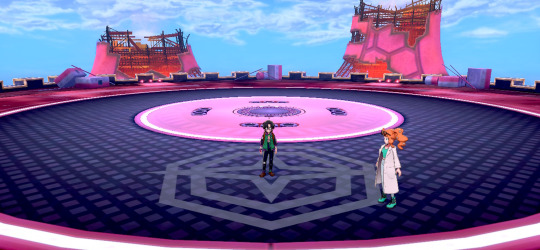
637 notes
·
View notes
Text
Top 10 Historical Places of the World ! 2022
Top 10 Historical Places of the World ! 2022
Top 10 Historical Places of the World ! 10 Must-Visit Historical Places Around the World.
If you’ll travel far and wide to be awed by a UNESCO World Heritage site, make sure you have these major attractions on your list.
The Pyramids at Giza in Egypt. …
The Colosseum and Roman Forum in Italy. …
Stonehenge in the United Kingdom. …
Machu Picchu in Peru. …
Petra in Jordan. …
Delphi in Greece.…
View On WordPress
#best historical places in india#historical#historical places#historical places in india#historical places of the world 2022#historical places world#historical places you didn&039;t know#Machu Picchu#most historical places#most historical places of the world#most historical places of the world 2022#mysterious places#places#top 10 historical places#top 10 historical places of the world#top 10 historical places of the world 2022#tourism#Travel Food Vlogs#travel vlog
0 notes
Note
im asking this out of pure ignorance but I've always wondered how does hinduism handle people who are not hindu? i know Christianity is essentially 'be the right kind of christian or go to hell' (so much as to beleive that Jewish people are literally devils, for example) but i was wondering how hinduism deals w people who are in proximity but not of the same religion. also if a dalit or lower caste person converts from hinduism to another religion, how does that affect thier life and how they're treated? appreciate your answer if u feel like explaining ^__^
it depends, in some parts of the country the non hindu has the same status as the lower caste dalit by default – so exclusion but in most places its a detente where religious and caste endogamy is strictly maintained. housing and employment discrimination is v common. its actually much harder to marry under the special mariage act and violence against interfaith and intercaste couples by their own families is common. in 2023, the muslim is the designated enemy of the state. the christian was fooled by the british and/or money to give up their culture or is literally a foreign agent. if you're looking for a textual answer, the equivalent of the "infidel," there isn’t really one because the streamlining of the canonical religious texts and construction of the hindu is recent. hinduism has aimed to appropriate instead of convert.
in modern india, legally anyone who is not a christian or a muslim is treated as a hindu. you are hindu by default in india to the state, governed by hindu codes for marriage and inheritance. for indigenous tribals it is a matter of coercing their children to feel shame at the (state sponsored but outsourced to private religious groups, love privatisation!!!) residential schools about their animist practices and making them worship the proper gods. for sikhs, jains and buddhists their is marginally more toleration. but they are basically seen as wayward hindu sects. this does change when they're in conflict with the majority in a way that resists "national cohesion" – see sikh pogroms in 1984 and the recent moves against sikhism due to the invocation of khalistan in the farmers protests. when dalits convert to buddhism many right wingers will invoke the spectre of predatory conversions.
since you are supposed to be hindu by default, christians and muslims are then seen as invasive outsiders and conversions are regulated very strictly by many states. it is historically true that christian missionaries brought christianity as part of a broader civilising mission, but imo it says something really depressing about hinduism that its epithets for christians is 'ricebag converts' bc people apparently converted for a bag of rice. islam's foothold in the continent is older, accompanying immigration from the west as well as the sultanate and the mughals. returning these christians and muslims to the fold, or "ghar wapsi" is a major project of the hindutva right. note that india is home to one of the world's largest populations of muslims (~200mil).
lower caste dalits have long converted to christianity and islam but caste violence follows them there anyway. caste may have textual origins in religion and focus on ritual purity but it is a socioeconomic form of subjugation. this means that while still subject to caste violence, dalit christians and muslims will be denied redressal through state protections like legislations against anti caste violence or reservations because those are restricted to hindu dalits.
334 notes
·
View notes
Note
Can you give your thoughts on the general character art design of Hades? It's always seemed kind of off to me and you seem to have good enough media opinions to put the reason why into words
i mean, first of all, i think that they suffer just from being The Greek Gods and therefore just having the most barebones basic designs that those archetypal characters get in pop culture. like look at zeus:
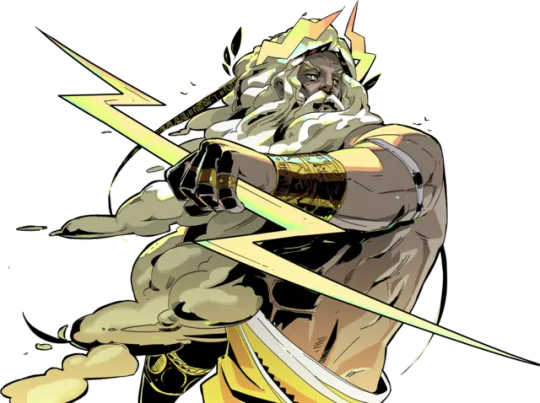
like. this is Zeus. there are some interesting flairs here with the lightning crown and cloud beard but like. It's Zeus. the visual language here is not communicating anything more interesting or unique or vivid than It's Zeus. contrast, like, rukey from pyre:
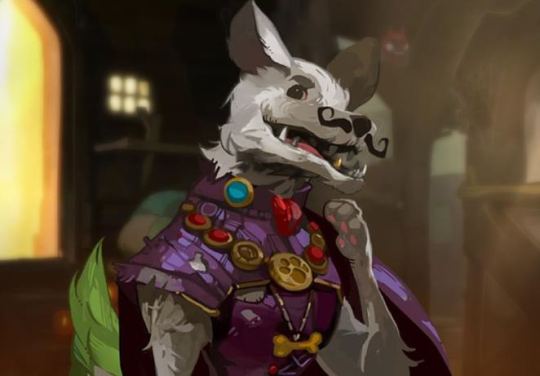
look at how much fucking personality is conveyed by this little freak. the fucking moustache! the fancy little cloak but the messy dog hair. the playful expression, the gold tooth, the glint of cunning in the eye, the raised little paw. you look, at this guy and get an immediate idea of what and who he is.
i also hate how 1. shrinkwrapped and 2. fucking grey and ashy every single character in hades is. like look at zeus's muscles up there this man is fucking dehydrated and like. why does athena look like this
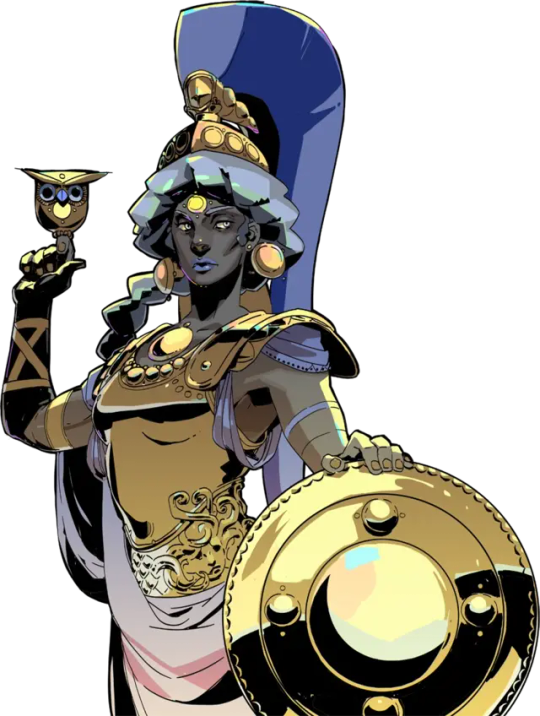
she is grey. she is so fucking grey. this is a vampire. this is a woman made of ash.
furthermore i find what they did with the greek gods wrt to making them a few different races to be a cowardly half-measure. like--the idea they forwarded in interviews that greek gods are 'global' and should represent the whole world are, quite frankly, just bullshit! i dislike this universalization of a mythology that is very very very tied to a particular culture and time and place because it is just another shape of the attempted universalization of the 'Western Canon', the removal of these things from historical place and context to make them abstract ideals that can be imposed upon the whole world because they 'transcend culture' while really they have just been incorporated into a dominant culture.
but, like, most frustratingly--there is a like huge wealth of cultural variety to be found in greco-roman myth. versions of these gods were worshipped in north africa and egypt and west asia and even as far as india. but, like, the commitment to multiethnicisim is purely surface-level, so they don't employ any of the iconography or look into these non-european syncretic depictions of these deities. they just take all their design cues from the tired pop-culture versions of purely greek aesthetics. imagine how fucking interesting the character designs for hades could have been if instead of making dionysus a person of colour and calling it a day, they represented a specifically indo-greek dionysus!

first after the conquests of alexander and once again after the expansion of the roman empire, these sorts of syncretic beliefs flourished throughout the mediterranean. if you really want to write a greek mythology story without a cast of white guys then give me Zeus-Ammon, god dammit!
anyway yeah the fact that all of hades' characters look like they're severely hydrated and their roof just caved in on them is weird and bad and other than that they're for the most part just deeply generic Greek Gods with what feels like very little care or innovation or personality put into their designs compared to characters from transistor or pyre. shomar shasberg and manly tindenstauf each have more unique visual personality than every hades character combined
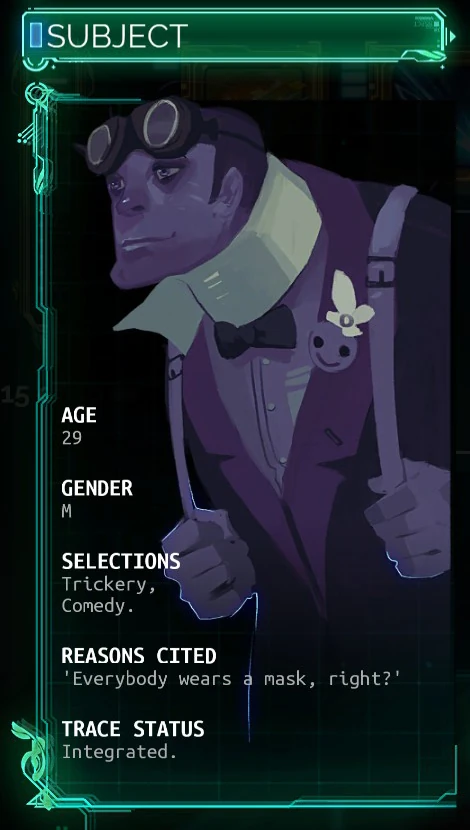
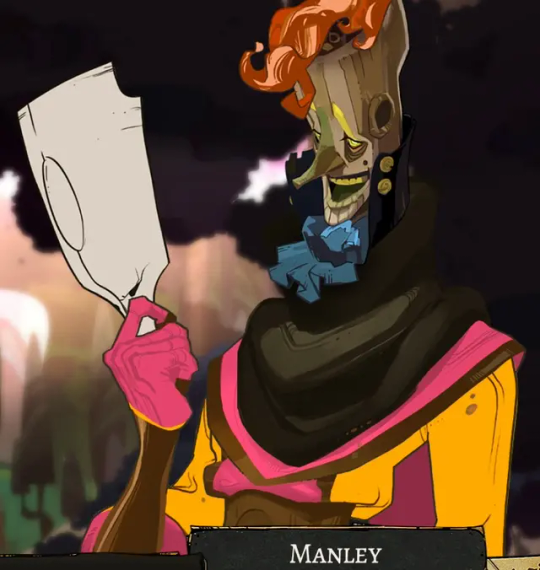
185 notes
·
View notes
Text
Star crossed lovers (Jude Bellingham fanfic)
Chapter 1
(Chapter 2)
Jude * female reader. No warnings.
……………………………………
Madrid was such a beautiful city. Ananya had been here for nearly four months now, yet couldn’t stop marvelling almost daily over some or the other detail she kept discovering. She loved the hustle bustle but also the quaint historical aesthetic that the city provided. That way, it was quite similar to Delhi, the city she was from.
She was practically in a different continent now, far far away from India. To move to another country, with a completely different language and culture, while she was just 20, had been a tough choice. But she was offered a great job in her undergraduate college placements and no career-minded adult would say no to such an opportunity. So, she had managed to convince her overprotective parents to let her move to Madrid, on her own. Her parents thought she would want to return in a few months itself, but she surprised even her own self with how well she was adjusting to the city. Madrid was beautiful, after all.
As she sat in a sweet little cafe on the side of a small road, close to her office in downtown Madrid, on a Friday evening, she smiled to herself on how the last few months had transpired. So much had changed in her life, and she was loving the ride she was on. An independent girl, with a decently fancy job in one of the best European cities. Life was good right now.
This tiny cafe was one of her favourite spots in the city. It was run by an older couple who always greeted her with a smile and the best churros in the galaxy. It was never too crowded, most people just took takeouts. So it was an ideal place to relax, and it was walking distance from her office.
She pulled out her laptop while munching on her plate of churros. It was already Friday evening but she still had a few hours of work left. Investment banking was fun but the hours came with it. Mr. Iglesias (the owner) quietly placed a cup of cappuccino, her usual, next to her plate. She smiled gleefully at his hospitality, then engrossed herself in her work.
30 minutes later, a distinct baritone and accent broke her out of her reverie.
‘A Spanish omelette please?’
Ananya turned around, drawn to the voice. A tall man, wearing stylish all black attire, was standing at the counter. She could only see his back.
Mr. Iglesias drew a blank expression. The tall man tried again.
‘Umm, an omelette, Spanish omelette, por favor?’
‘Un tortilla de patatas, senor.’
Mr. Iglesias nodded happily at the man and signalled 10 mins with his hands.
The man whipped his head in her direction, and smiled gratefully at her.
She had to look away. Immediately. Not just because he had the most infectious smile in the world. But because she recognised who it was and she absolutely would die if she acted crazy at this instant. No, she willed to not make a fool of herself.
But he was walking over to her now.
‘Hey, thanks a ton for that.’
She had taken a few deep breaths by now and was back to her typical poise.
‘No problem at all. I could see you were struggling there.’
He hung his head and laughed sheepishly.
‘I did learn what it was called in Spanish, I swear. But had a long day and completely blanked out. Umm, Spanish is not my first language you see. But I am learning.’
Despite the situation, she somehow managed to smile back genuinely at how he was trying to explain himself to a complete stranger.
‘Well, I am new to the city and the language as well. But my favourite dishes are something I never forget. Can’t go without those, right?’
He smiled at her again. A smile that lit up his whole face. A smile that could light up a black hole. She was amazed at how real, how normal he came across. He was wearing his cap backwards and had glasses on to serve as some disguise she supposed, but she doubted whether those would generally be of any help to him. Not anymore at least.
He played with the back of the chair opposite hers, and looked around.
‘Umm, are you alone? May I join you?’
She channelled all her inner poise before answering.
‘Yeah sure.’
And he flashed her another joyful smile while settling on the small table, opposite her. Man could charge 1000 euros for each smile and people would line up to pay.
He removed the godforsaken glasses, unveiling his big, coffee brown eyes. The hat he just turned backwards, which somehow suited his chiseled face even more.
‘You said you are not from here. May I ask where you are from?’
‘Sure, I am from India.’
‘Wow. I have heard so much about that place. Some of my neighbors back home are also from India. Would love to visit sometime.’
‘You should. There are many flavours to India which you could only experience when you visit.’
He nodded along, agreeing with her wholeheartedly. Mr. Iglesias waved to him from the counter, signalling 5 mins more. He smiled at him as well. Was that his default setting? Not that she was complaining. Oh hell, no.
He suddenly looked back at her.
‘Hey, I didn’t catch your name. So silly of me to not ask earlier.’
She found herself smiling again.
‘Ananya.’
‘A-nan-ya?’
He tried to break down the foreign sounding name in syllables. It was her turn to giggle now, and he rubbed the back of his head sheepishly.
‘Not A as in Ancelloti but A as in Alvaro Morata.’
He leaned back in his chair, still rubbing the back of his head, and looked straight into her eyes.
‘So, you do know who I am?’
She tuned her laptop towards him. The screensaver was her in the trophy room at the Bernabeu, along with the 14 Champions League trophies.
He looked at the photo and her beaming smile. Her love for the club was evident.
‘Been a Madridista since 2009. 15 years. That’s 75% of my life. So yes, I do know who you are Jude.’
Somehow, just somehow she had managed to find her footing amidst all this madness and was having what would appear to be a fairly normal conversation with a global superstar. She felt it was because of him, though. Because how easygoing and grounded he seemed.
‘Wow. That’s awesome. You know, I didn’t even like football at that age? It’s strange, I know. My dad always wondered what was wrong with me. But one day, suddenly, I decided I wanted to play.’
‘I get it. Sometimes god acts in mysterious ways. You won’t even know how or when, it just happens.’
‘I know right.’
They fell into a comfortable silence. Just looking at each other. And smiling. Both couldn’t stop smiling for some reason.
Mr. Iglesias appeared then with the omelette and Jude nearly hugged him in delight.
He stuffed his face with a gigantic bite, moaning at the taste. Then, he ended up coughing vigorously because the bite was almost one third of his plate.
‘Easy. Here, take this.’
Ananya offered her glass of water to him, which he gulped down in three sips. Then rubbed his mouth with the back of his hand as he looked back into her eyes.
‘My mom had once gotten me an omelette from this place. Felt like little drops of heaven. Since then I have been meaning to have this. Sorry for the clumsiness, I got a little carried away.’
He was apologising to her again, which was so endearing. And that accent made everything sound twice as cute.
They went back to their food, and the comfortable silence was back. But she was learning that he couldn’t stay silent for long.
‘Since you already have a head start in knowing about me, would you tell me something about you? What brings you to Madrid?’
‘I work at an investment bank here. Kind of my dream job and my dream firm.’
He leaned forward, tapping his fingers on the table.
‘Ooooh fancy.’
‘Yeah right. Look who is talking.’
‘No, it is fancy. Seems like a smart person thing. I had a feeling you were like that.’
He spent the next 15 mins learning about her job, and by the end he accused her of showing off by using big terms he won’t understand. She neither confirmed nor denied that accusation.
He took another mouthful again, completely ignoring what happened the last time. She couldn’t help but be amused at his antics.
‘So, have you seen any match live?’
Her whole demeanour changed and she was practically bouncing off the chair now. He found that extremely amusing.
‘Oh yes. I was here for internship last year and I managed to watch one game. Vini scored two kickass goals and we won. It was amazing - easily one of the best days of my life.’
‘Um-hmm.’
Something in his tone was off but she was too happy to care.
‘Is he…your favourite player, then?’
‘Oh he’s amazing. Us fans have seen him since he was 17 I guess? And look at the journey. Love the player he has become. But my favourite will only ever be one. I am a Ronaldo fan girl.’
Well, that seemed to cheer him up. He kind of figured that given she had mentioned 2009.
He watched her face fondly for a few seconds as she turned nostalgic and relived the memories in her head.
‘Nothing this season, then?’
‘No luck. The tickets are always sold out. Last year also it was our firm which arranged them for us.’
‘Hmm.’
She hadn’t seen him play, then.
He went back to his last bite and turned it around with his fork a few times, pondering over his next words.
‘Well, there is a home game tomorrow.’
‘A HOME GAME? It’s the first Classico of the season. Ofcourse I know that. God I am so nervous. Hated them winning the league last year. Hate their guts. Jude, you guys better win tomorrow, please. ’
He watched her keenly though her rant, thoroughly amused.
‘Thanks for the order. But, what I meant was, do you want to watch the game tomorrow?
‘But, Classicos get sold out in the beginning of the season right?
She looked confused. Still not getting the point. He realised he would have to spell it out for her.
So smart in her work but not as much in this, which was cute in its own way.
‘Ananya, do you want to watch the match tomorrow from my box? Because you are welcome to do that.’
Oh. Oh.
She stayed still, and he scanned her face for a response.
A volcano erupted inside her. She had been so lost in talking about Madrid and that match that she had completely missed the way he had been looking at her. And what he had asked her just now.
He could tell from her face that something deep was holding her back.
‘Listen, bring your friends / colleagues if you want to. Many of my friends have attended. Plus the boxes are all next to each other so the media / fans can’t really tell who is in whose box, if that’s what’s concerning you. You can just attend as a friend, that’s it.’
She wasn’t buying the last line.
‘That’s it?’
She called his bluff while meeting his gaze. Which he admired. The smart girl was back.
‘Well, after the match, we could grab a bite maybe? Doesn’t have to be a public place, don’t need that drama. So maybe, your place? Or….mine?’
She shook her head sadly.
‘Jude…it’s not that you are not…but…we live in very different worlds and…’
He had an inkling of what was coming and he cut her off before she could finish the sentence. Taking no for an answer was not an acceptable option right now, not when the last 30 mins had been so pleasant and refreshing.
‘What if I score tomorrow? Against the team you detest? How about then?’
She looked at him with her mouth half open. Which made him look down to her lips. But he had the good sense to quickly revert to her eyes.
‘Won’t you want to give me some extra motivation to score against Barca? Or would you rather I be sad and distracted tomorrow?’
She couldn’t believe what she was hearing. He was really doubling down on this.
‘Let me get this straight. You are seriously using my love for Real Madrid to get me to go out with you?’
He leaned back in his chair, smirked that gorgeous smirk, and shrugged casually, with an iota of arrogance, knowing he was going to win this. Even the arrogance suited him, for crying out loud.
But then, he leaned forward and covered her hand with his, expression all sincere. Her breath hitched at his touch.
‘Look. I just want to spend some time with you, and I really would love for you to see me play. I get that my lifestyle comes with a zillion challenges but that’s step 10. Can we please just spend a few hours together, just you and me, where we talk and get to know each other? I promise, that’s all I am asking. And you don’t have to say yes to that now. You can decide tomorrow after the match. How does that sound?’
The earnestness in his silky smooth voice was drawing her in. She believed him, and was on the verge of saying yes.
But he got restless and played his final card, which he always had up his sleeve.
‘Also, Zidane is going to be there. Their box is just two rows down from where you would be.’
She burst out laughing and threw the table napkin in his face, which he caught easily. Then flashed her a million dollar smile.
‘You really are something aren’t you?’
‘Well, I try.’
She had forgotten that his hand was still on top of hers and was reminded of it when he squeezed it briefly, then withdrew it.
He pulled out his phone and slid it in front of her.
‘Gonna need your number to send the passes.’
Her mind was still registering what she had agreed to but her body reacted involuntarily and typed in her number.
He saved it quickly and sent over the passes in seconds.
‘So, I will see you tomorrow then?’
‘Yes. You leave me no choice. And you better win now, after what you just pulled.’
His phone chimed with a reminder then, for an evening home fitness session prior to the match. He had to leave, she could tell.
He stood up, and she got reminded of how tall he was. His lean physique made him look even taller.
He reached out for her hand again, shaking it this time. And lingered for a few seconds.
‘I will have to go thank my mom now for recommending this place.’
He chuckled, while finally getting go of her hand. She couldn’t stop admiring how his eyes crinkled when he smiled.
‘Can I drop you home?’
‘I have some work to finish - you carry on.’
‘Ok. Looks like it’s gonna rain tonight so pls leave soon.’
Gosh, could this guy get any more charming?
‘Yeah, I will.’
Grudgingly, he went towards the door of the small cafe but looked back one final time.
‘Ananya - such a beautiful name.’
He said it perfectly this time and she gave him a hearty smile, exactly what he needed before he made his way out.
She fell back in her chair, buried her face in her hands and tried to make sense of what had just happened. Tomorrow was going to be nuts. She was going to see Zidane, who she loved to bits. She was gonna watch El Classico. And then, if Jude had his way, she was going to go out on a date with him.
………………………………………………………..
Author’s note: This is set in October and pls assume the classicos were reversed :)
Lots more to come, hope you liked the setup.
35 notes
·
View notes
Text
Clone High: It's About the Contrast

Something I've seen a lot of is Clone High S2 redesigns. People taking the new characters of S2 of Clone High and changing the designs, usually cause they don't like what we did get. Some of these are neat. I saw one that tries to combine their new designs with their S1 designs from when these characters were incidentals. A lot of them seem to take the personality out of the design. Most of them look hard to animate, but that isn't the point I'm trying to make.
People seem to really dislike these new designs. There are valid design reasons (some are a bit overdesigned, and they definitely clash with the S1 designs) but it just seems people are mad at them in concept. Especially Harriet Tubman. How could they turn Harriet Tubman into... this?
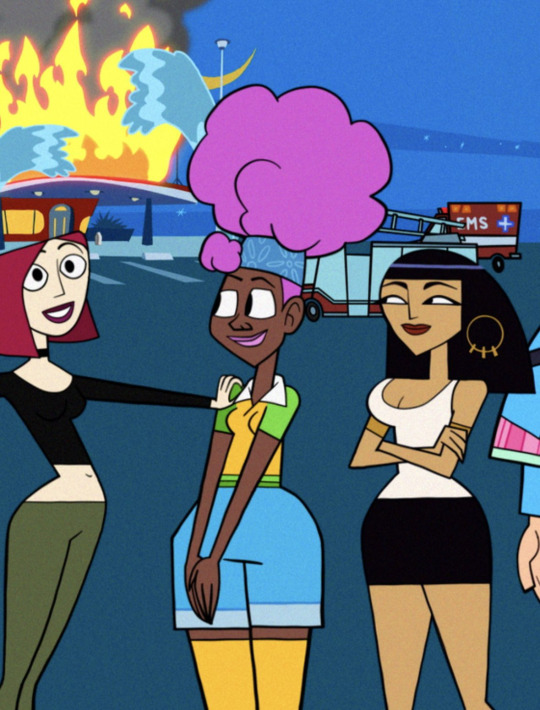
It's outrageous! And yeah, it is. It's supposed to be. That's the joke. In the 20 years since Season 1, the Clone High Fandom has grown and shipped and gossiped and a lot of people have forgotten that the incongruity of the characters is part of the joke. Joan of Arc was not in fact a goth girl who constantly thirsts over tall men. The same goes for several other characters.
Harriet Tubman isn't Harriet Tubman. She shares her DNA but she is decidedly a different person. That's the point of Clone High, the show is less about historical figures interacting in a high school setting and more about how these people might be if they were raised under different circumstances. Ideologically, Clone High is an argument against great man theory.
Gandhi changed the world. But when he isn't born and raised in British controlled India under very specific circumstances, he's just some guy. The same goes for Cleopatra, JFK, Joan of Arc,, Jesus Christ, and yes, even Confucius, Frida Kahlo, and Harriet Tubman. It's circumstances that create people, not people making the circumstances.
Imagine if you had the chance to have a conversation with the real Harriet Tubman. What do you think she would say? How would she act? I'm sure she'd probably be an interesting and nice person, but she wouldn't be a character fit for a wacky animated sitcom. You don't really expect former slaves to be bubbly like that.
It both literally and metaphorically takes the basic DNA of these figures and subverts and modifies their existence through modern society, or rather the tropes of teen dramas. Not just asking what would happen if these people were in high school but if they were ordinary people. Instead of being a hero whose life is in danger, Harriet Tubman is a girl who gossips and whose biggest worry is becoming a basic bitch.
Look at the S2 finale. The board of shadowy figures have assembled their great men and put them in competition. They'll weed out the best of the best to become the great men of the future. And out of about 100 clones, only one actually makes it to the end. Everyone else fails. The one clone who does make it, Joan, is born again into extreme circumstances. Being left for dead by her friends and suffering a psychic break. There is no such thing as great men, just extraordinary situations.
I think this theme of subverting these legendary figures is something that should be kept in mind when talking about the show. It isn't really a show about historical figures, just historically-themed characters. And that's okay. It's very funny when done well! It's a cartoon and it really acts like it. It was never asking to be taken as a serious drama and definitely wasn't asking to be a commentary on historical figures. It simply parodied its contemporary teen dramas a little too well and we got invested in joke characters and everything changed. The S2 writers were in a very unenviable place, and I applaud them for taking things in bold new directions. If you haven't watched S2 or even just watched a few episodes, I'd recommend giving it another chance. It's not perfect but it gets better as it continues. It has its own distinct feel and style while still understanding what "the point" of the original was.
Also Kahlopatra for life ❤️ 🧡 💛 💚 💙 💜

190 notes
·
View notes
Text
Most books on the Bengal delta begin by describing it as “riverine,” [...] the land is the product of fluvial action [...]. [I]n thinking about Bengal, one tends to imagine the ricepaddy fields [...]. It was not so all the time; Bengal was never really a land of farming [...]. Traveling through Bengal in the eighteenth century, the French traveler Orme saw a highly sophisticated water-based economy - the blessing of rivers - irrigated [...] by the monsoon rains and annual flooding. [...] The rivers were not just channels of water; they carried a thriving trade, transporting people and goods from one part of the delta to another. Today, Bengal is generally seen as comprising lush green rice paddies [...]. Rivers are often presented as causing immense grief [through seasonal flooding] [...]. Clearly, there is a mismatch here. [...] How (and when) did Bengal’s social milieu transform from water-based to land-based? [...] Bengal’s essential character as a fluid landscape was changed during the colonial times through legal interventions that were aimed at stabilizing lands and waters, at creating permanent boundaries between them, and at privileging land over water, in a land of shifting river courses, inundated irrigation, and river-based life.
Such a separation of land and water was made possible not just by physical constructions but first and foremost by engineering a legal framework that gradually entered the popular vocabulary. [...] BADA, which stands for the Bengal Alluvion and Diluvion Act, [was] a law passed by the colonial British rulers in 1825, following the Permanent Settlement of 1793. [...] The environment of Bengal can be described as hybrid, where the demarcation between land and water is neither well-defined nor permanent. Nature here represents a borderless world, or at best one in which borders are not fixed lines on the ground demarcating a territory, but are negotiated spaces or zones. Such “[...] spaces” comprise “not [only] lines of separation but zones of interaction…transformation, transgression, and possibility” (Howitt 2001, 240).
---
Current boundaries of land and water are as much products of history as nature and the colonial rule of Bengal played a key role in changing the ideas and valuations of both. [...] The debate on what constituted productive and unproductive uses of land preceded the application of English property law not only to establish permanent zamindari (a common term for the system of landlordism) settlement of land tenure in India, but also to valorize land in what had essentially been a land-water hybrid environment. The colonial land revenue system, by seeing land as more productive (being able to yield revenue) and useful, began the long historical process of branding the rivers of Bengal as uncivil and in need of control. [...] The problem with deltaic land is its non-permanent nature, as silt is stored by rivers: rivers do not always flow along a certain route [...] The laws that the colonial British brought to Bengal, however, were founded upon the thinking of land as being fixed in place. [...]
---
Experiments to fine-tune the land-based economy began in 1760 when Bengal, and its ceded territories, came under the East India Company rule. [...] To entrench the system, the Permanent Settlement of 1793 created zamindars (or landlords) “in perpetuity” - meaning for good. The system was aimed at reducing the complexities of revenue collection due to erratically shifting lands and unpredictable harvests in a monsoon-dependent area [...]. Alarmed at the possibility of dismemberment of their estates, the zamindars decided to bind tenants to the same conditions to which they themselves were bound by the colonial government, and one of their actions was to create patni tenures or perpetual leases. [...]
It also meant that the right to collect rent from the tenants, often through the use of force, devolved to the lower layers, making the upper-layer zamindars more of a juridical rather than a real social entity in the eyes of the peasants. The patnidars, finding how much trouble this arrangement took off their own back, created dar-patnis or patnis of the second degree [...]. The dar-patnis created se-patnis or patnis of the third degree. The East India Company, therefore, had to legalize, through Regulation VIII of 1819, the creation of such formations, thus giving a de jure recognition post facto [...].
The regulation, although innocuous and simple, was of great historical potency: it became the key that unlocked the door to environmental and socio-economic changes of unparalleled magnitude. From a riverine community, within a hundred years, Bengal was transformed into a land-based community. [...]
---
The meaning of property also changed as a result of this law: the cultivators began to lose the right to occupy the land that they had enjoyed since ancient times because the colonial British had enumerated the characteristics of the zamindari property as an absolute right of proprietorship in the soil [...].
[T]he Company then began to contemplate the problematic issue of legalizing the fictional entities of chars [...]. The law that was created for this purpose -- and still rules the rights of ownership of charlands -- is the Bengal Alluvion and Diluvion Regulation Act (BADA) of 1825. [...] BADA was meant to establish a set of rules to guide the courts to determine the claims to land “gained by alluvion” or accretion, and the resurfaced land previously lost by diluvion or erosion. Even if one takes it for granted that chars are technically non-land in the sense that they exist within river banks, the difficulty remains that when a piece of land is lost to bank erosion, it may not arise in exactly the same location or arise at all within the foreseeable future. This means the owner has no certainty that they will get it back when it resurfaces or when another char rises nearby. [...] Thus, the key to establishing land rights in the court of law remained the payment of rent, even on diluviated land. [...] Such a rule will, however, not be applicable if a river suddenly changes its course and separates a considerable piece of land from one to join it with another farm, but without destroying the identity of the land so removed -- thus preventing legal recognition. New accretions in large navigable rivers would be the property of the state [...].
---
All text above by: Kuntala Lahiri-Dutt. “Commodified Land, Dangerous Water: Colonial Perceptions of Riverine Bengal.” In: “Asian Environments: Connections across Borders, Landscapes, and Times.” Edited by Ursula Munster, Shiho Satsuka, and Gunnel Cederlof. RCC Perspectives, no. 3, 17-22. 2014. [Bold emphasis and some paragraph breaks/contractions added by me.]
#summary of how britain took over bengal#calcutta#sundarbans#abolition#ecology#imperial#colonial#mangroves#tidalectics#archipelagic thinking#wetlands#ecologies#carceral geography#debt and debt colonies#caribbean#indigenous
248 notes
·
View notes
Text
I think i know why Christian was set to Marry Devi... (My theory i uploaded on reddit was removed by the admin idk why?)
It was bugging me from the moment when Christian said that he wanted to marry Devi from the very beginning although dozens hid this fact from her to spar her to get married to Christian. But why he wanted to marry her? Christian didn't know Devi and the latter came way before Devi met Ian. so what was he insisted to marry on marrying and devi only. also if it was because he show her portrait then he could've remember her when they meet for the first time.
After thinking about it so much i couldn't come to theory or connect the dots that not until i was sitting with my dad watching the news (I am Indian btw) and suddenly the news was talking about the most famous and precious jewel of india "Kohinoor" i am not sure how many of you know about this but this diamond it very "precious", "Priceless" and "CURSED" yes this diamond is "cursed" it was called cursed because of that soley diamond in the past war has fought for 500 years or more. and it has killed everyone who tried to posses that diamond the biggest empire has collapsed because of this mere diamond although it's not a mere diamond. because in reality, this diamond belongs to the gods.
The Koh-i-Noor Diamond isa a 186-caratt diamond with a curse affecting only men. According to folklore, a Hindu description of the diamond warns that “he who owns this diamond will own the world, but will also know all its misfortunes. Only God or woman can wear it with impunity.” Throughout history, the gem traded hands among various Hindu, Mongolian, Persian, Afghan and Sikh rulers, who fought bitter and bloody conflicts to own it. Every prince whohadf the diamond would ultimately lose his power if not his life. For over 500 years the stone changed hands in gruesome battles and vicious coups.
The kingdom of Golconda(current day state of Telengana,India), The khilji Empire,The Tughlaq Empire,The Lodhi Empire,The Mughal Empire,The Maratha Empire,The kingdom of Persia,The Durrani Empire,The Afghan Khanate,The Sikh Empire all collapsed one behind the other while owning the Koh-i-noor Diamond.The height of the curse can be seen in the fact that even World level Empires crumbled below the weight of the curse.The British East India company owned the Jewel since the Annexation and Disbandment of the Sikh Empire. But only 7–8 years following the looting of the jewel,the revolt of 1857 literally destroyed the east IndiaCompanyy from its roots.
Historical records indicate the diamond was acquired by the British in 1849 and given to Queen Victoria in 1850. To heed its legend, the diamond has since only been worn by women, including Queen Alexandra of Denmark, Queen Mary of Teck and the late Queen Elizabeth, The Queen Mother, wife of King George VI.
In 1936, the stone was set into the crown of the wife of King George VI, Queen Elizabeth (later known as the Queen Mother). The British Royal family was aware of the Curse of the Koh-i-Noor, and from the reign of Queen Victoria the Kohinoor diamond has always gone to the wife of the male heir to the British throne
Currently, it is set as one of the jewels within a British monarchy crown that is kept at the Tower of London Jewel House.
I am telling you the whole story because?
here is the dots to this theory:
Sharma owns the mines for gemstones, diamonds, and crystals not only in Bengal but in very different places on all over India.
Devi's brother died while trying to save the bride.
Those who came to kill people talked about letting "Women alive and killing all the men" A simple person may think they said it to use them later on. if so then why was Rati killed?
Devi becomes the heir of the Sharma household, and Kamal insists on making Devi the heir why? i understand that is because Kairas was his best friend but he could've easily let Devi's uncle become the heir.
For some reason Kamal agreed to marry off Devi to Ian suddenly? like that man fought for 5 years against everyone then why did he turn his back suddenly?
Also I personally thin Ian chose devi for specific reasons too, like right now she is the head of Sharma's house but even when she wasn't he wanted to marry her and only her.
The Koh-i-noor might be found on devi's mine. as it holds the power of god and specifically it is cursed. As it said that "Only God or Woman can wear it with IMPUNITY" where Impunity simply means exemption from punishment or freedom from the injurious consequences of an action.
Or Devi personally is or is the koh-i-noor itself. Or Maybe British knew about the diamond and it's real power. They have stole diamonds from Taj Mahal too but they knew that the diamond who belongs to god holds its own power so they might need someone for that. Devi. Not only she is related to Maa Kali, she is girl and if they choose Devi and then found diamond form her mine then they can ask her to give it to them as in original i mean in reality that's how the koh-i-noor to the queen, they manipulate the royal family livin' in the England making them into thinking it was a simple diamond was given to the queen but in reality it was more then that!
I think they knew about the mines or something similar related to it.
36 notes
·
View notes
Text
JTTWR Story Idea Directory
I was influenced by @digitalagepulao's recent post to list my own collection of story ideas.
These are set in the Buddo-Daoist disc world system of the original novel.
1) The Origin of Sun Wukong
This provides three fictional origins for the Monkey King based on my past research. He is ...
The spiritual offspring of supreme ape immortals who have served as teachers of countless mortal and divine beings, the later including the Buddha and Master Subodhi. The couple rebels against the heavenly hierarchy for failing to keep an ancient promise.
The offspring of an ancient evil who intentionally bred him to destroy the gods.
A former hot-tempered, Vajra warrior-like Bodhisattva who is exiled from paradise for killing a being who seemingly offended the Buddha. He is punished to ten lifetimes as a figure of great strength who is continually bested and forced by circumstances to protect something or someone weaker than him.
Each origin has pros and cons.
2) Immortal Warriors and Shaolin Monks
Master Subodhi's mountain is the training ground for an immortal monastic army similar to Shaolin. Monkey gains combat experience as a monk soldier.
3) The REAL Reason Subodhi Expels Sun Wukong
Sun's much, much older spiritual brothers and sisters attack him out of jealousy for quickly climbing the ranks of the immortal monastic army. Forced to defend his position, Monkey's anger drives him to take on a monstrous, 100,000-foot-tall cosmic form to defeat his opponents. Subodhi fears Sun's limitless potential and great anger will lead him down the path of villainy, so he uses the pine tree incident as an excuse to expel him.
4) The Reason for Sun Wukong's Rebellion
Subodhi warns Monkey to protect himself when mastering the "Multitude of Terrestrial Killers" (i.e. the 72 changes) because said deities are considered baleful stellar gods who bring bad luck and disease. But the Terrestrial Killers exploit a chink in his spiritual armor and feed him small suggestions that have compounding effects on his personality, making him increasingly egotistical and combative. This eventually leads to his rebellion against heaven.
These are set on our Earth.
1) Sun Wukong vs Heracles/Hercules
Heracles, the Buddha's protector, is called in place of Erlang to end Monkey's rebellion. After the latter attains Buddhahood at the end of the journey, the Tathagata asks the son of Zeus to escort Sun through the Greek world system.
See the 07-08-22 update (refer also to section 3 for background info):
2) A Realistic Retelling of Journey to the West
The story follows the itinerary of the historical monk Xuanzang, and the various episodes from the original novel take place both on the way to and coming back from India. The disciples are acquired during the initial journey; however, their order is reversed—Sha, Zhu, and then Sun.
The past punishments of the disciples are still the same. But Monkey's history is changed because Taoism didn't exist in ancient India. Instead of becoming an immortal, he is a Hindo-Buddhist rishi who rebels against heaven.
See updates here and here.
#Sun Wukong#Monkey King#Journey to the West#JTTW#Zhu Bajie#Zhu Wuneng#Sha Wujing#Sha monk#Sandy#Pigsy#Tripitaka#Xuanzang#alternate universe#lego monkie kid#buddhism#taoism#daoism#Hinduism#Chinese mythology#Hindu mythology#Buddhist mythology#Greek mythology#Hercules#Heracles#story ideas
90 notes
·
View notes
Text
In the age of Hindu identity politics (Hindutva) inaugurated in the 1990s by the ascendancy of the Indian People's Party (Bharatiya Janata Party) and its ideological auxiliary, the World Hindu Council (Vishwa Hindu Parishad), Indian cultural and religious nationalism has been promulgating ever more distorted images of India's past.
Few things are as central to this revisionism as Sanskrit, the dominant culture language of precolonial southern Asia outside the Persianate order. Hindutva propagandists have sought to show, for example, that Sanskrit was indigenous to India, and they purport to decipher Indus Valley seals to prove its presence two millennia before it actually came into existence. In a farcical repetition of Romanic myths of primevality, Sanskrit is considered—according to the characteristic hyperbole of the VHP—the source and sole preserver of world culture.
This anxiety has a longer and rather melancholy history in independent India, far antedating the rise of the BJP. [...] Some might argue that as a learned language of intellectual discourse and belles lettres, Sanskrit had never been exactly alive in the first place [...] the assumption that Sanskrit was never alive has discouraged the attempt to grasp its later history; after all, what is born dead has no later history. As a result, there exist no good accounts or theorizations of the end of the cultural order that for two millennia exerted a transregional influence across Asia-South, Southeast, Inner, and even East Asia that was unparalleled until the rise of Americanism and global English. We have no clear understanding of whether, and if so, when, Sanskrit culture ceased to make history; whether, and if so, why, it proved incapable of preserving into the present the creative vitality it displayed in earlier epochs, and what this loss of effectivity might reveal about those factors within the wider world of society and polity that had kept it vital.
[...] What follows here is a first attempt to understand something of the death of Sanskrit literary culture as a historical process. Four cases are especially instructive: The disappearance of Sanskrit literature in Kashmir, a premier center of literary creativity, after the thirteenth century; its diminished power in sixteenth century Vijayanagara, the last great imperial formation of southern India; its short-lived moment of modernity at the Mughal court in mid-seventeenth century Delhi; and its ghostly existence in Bengal on the eve of colonialism. Each case raises a different question: first, about the kind of political institutions and civic ethos required to sustain Sanskrit literary culture; second, whether and to what degree competition with vernacular cultures eventually affected it; third, what factors besides newness of style or even subjectivity would have been necessary for consolidating a Sanskrit modernity, and last, whether the social and spiritual nutrients that once gave life to this literary culture could have mutated into the toxins that killed it. [...]
One causal account, however, for all the currency it enjoys in the contemporary climate, can be dismissed at once: that which traces the decline of Sanskrit culture to the coming of Muslim power. The evidence adduced here shows this to be historically untenable. It was not "alien rule un sympathetic to kavya" and a "desperate struggle with barbarous invaders" that sapped the strength of Sanskrit literature. In fact, it was often the barbarous invader who sought to revive Sanskrit. [...]
One of these was the internal debilitation of the political institutions that had previously underwritten Sanskrit, pre-eminently the court. Another was heightened competition among a new range of languages seeking literary-cultural dignity. These factors did not work everywhere with the same force. A precipitous decline in Sanskrit creativity occurred in Kashmir, where vernacular literary production in Kashmiri-the popularity of mystical poets like Lalladevi (fl. 1400) notwithstanding-never produced the intense competition with the literary vernacular that Sanskrit encountered elsewhere (in Kannada country, for instance, and later, in the Hindi heartland). Instead, what had eroded dramatically was what I called the civic ethos embodied in the court. This ethos, while periodically assaulted in earlier periods (with concomitant interruptions in literary production), had more or less fully succumbed by the thirteenth century, long before the consolidation of Turkish power in the Valley. In Vijayanagara, by contrast, while the courtly structure of Sanskrit literary culture remained fully intact, its content became increasingly subservient to imperial projects, and so predictable and hollow. Those at court who had anything literarily important to say said it in Telugu or (outside the court) in Kannada or Tamil; those who did not, continued to write in Sanskrit, and remain unread. In the north, too, where political change had been most pronounced, competence in Sanskrit remained undiminished during the late-medieval/early modern period. There, scholarly families reproduced themselves without discontinuity-until, that is, writers made the decision to abandon Sanskrit in favor of the increasingly attractive vernacular. Among the latter were writers such as Kesavdas, who, unlike his father and brother, self-consciously chose to become a vernacular poet. And it is Kesavdas, Biharilal, and others like them whom we recall from this place and time, and not a single Sanskrit writer. [...]
The project and significance of the self-described "new intellectuals" in the sixteenth and seventeenth centuries [...] what these scholars produced was a newness of style without a newness of substance. The former is not meaningless and needs careful assessment and appreciation. But, remarkably, the new and widespread sense of discontinuity never stimulated its own self-analysis. No idiom was developed in which to articulate a new relationship to the past, let alone a critique; no new forms of knowledge-no new theory of religious identity, for example, let alone of the political-were produced in which the changed conditions of political and religious life could be conceptualized. And with very few exceptions (which suggest what was in fact possible), there was no sustained creation of new literature-no Sanskrit novels, personal poetry, essays-giving voice to the new subjectivity. Instead, what the data from early nineteenth-century Bengal-which are paralleled every where-demonstrate is that the mental and social spheres of Sanskrit literary production grew ever more constricted, and the personal and this-worldly, and eventually even the presentist-political, evaporated, until only the dry sediment of religious hymnology remained. [...]
In terms of both the subjects considered acceptable and the audience it was prepared to address, Sanskrit had chosen to make itself irrelevant to the new world. This was true even in the extra-literary domain. The struggles against Christian missionizing, for example, that preoccupied pamphleteers in early nineteenth-century Calcutta, took place almost exclusively in Bengali. Sanskrit intellectuals seemed able to respond, or were interested in responding, only to a challenge made on their own terrain-that is, in Sanskrit. The case of the professor of Sanskrit at the recently-founded Calcutta Sanskrit College (1825), Ishwarachandra Vidyasagar, is emblematic: When he had something satirical, con temporary, critical to say, as in his anti-colonial pamphlets, he said it, not in Sanskrit, but in Bengali. [...]
No doubt, additional factors conditioned this profound transformation, something more difficult to characterize having to do with the peculiar status of Sanskrit intellectuals in a world growing increasingly unfamiliar to them. As I have argued elsewhere, they may have been led to reaffirm the old cosmopolitanism, by way of ever more sophisticated refinements in ever smaller domains of knowledge, in a much-changed cultural order where no other option made sense: neither that of the vernacular intellectual, which was a possible choice (as Kabir and others had earlier shown), nor that of the national intellectual, which as of yet was not. At all events, the fact remains that well before the consolidation of colonialism, before even the establishment of the Islamicate political order, the mastery of tradition had become an end in itself for Sanskrit literary culture, and reproduction, rather than revitalization, the overriding concern. As the realm of the literary narrowed to the smallest compass of life-concerns, so Sanskrit literature seemed to seek the smallest possible audience. However complex the social processes at work may have been, the field of Sanskrit literary production increasingly seemed to belong to those who had an "interest in disinterestedness," as Bourdieu might put it; the moves they made seem the familiar moves in the game of elite distinction that inverts the normal principles of cultural economies and social orders: the game where to lose is to win. In the field of power of the time, the production of Sanskrit literature had become a paradoxical form of life where prestige and exclusivity were both vital and terminal.
The Death of Sanskrit, Sheldon Pollock, Comparative Studies in Society and History, Vol. 43, No. 2 (Apr., 2001), pp. 392-426 (35 pages)
82 notes
·
View notes